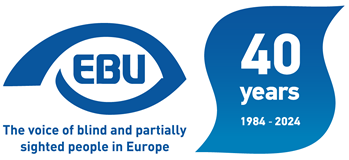We analysed the new Commission Guide of Good Electoral Practice (published in December) and communicated on social media about our first, positive, impressions. In substance, we welcome a comprehensive and practical resource on how to make electoral processes accessible to persons with disabilities. Based on our own recommendations stemming from our Accessible Voting Awareness-raising (AVA) report, it also provides concrete steps on how to improve accessibility for blind and partially sighted citizens. We invite electoral authorities to make use of this resource using the forthcoming elections to the European Parliament as opportunity to bring about change.
We received positive feedback from the International Federation of Library Associations and Institutions (IFLA) to our input for their draft annual monitoring report, namely where we alert them to possible negative effects of the European Accessibility Act (e-books) on the Marrakesh Treaty implementation.
We circulated the EBU recommendations for accessible payments terminals to the key stakeholders. We received positive reactions from ANEC (the voice of consumers in European standardisation) and the European Disability Forum (EDF), as well as from the leader of the EU standardisation working group for the review of EN 301 549 (digital accessibility standard). As far as industry representatives are concerned, we started sending the recommendations to Global Payments, Payments Association EU, European Payments Council, European Payment Institutions Federation, and Payments Europe, with requests for meetings. Our recommendations have been published by the AccessibleEU resource centre on their website and in their best practices database. AGE and BEUC marked an interest for our recommendations, in the context of their joint webinar to discuss the first draft of the digital euro rulebook.
We reacted to the adoption by the Employment and Social Affairs Committee of the European Parliament of its report on the proposed Directive establishing a European Disability Card and a European Parking Card for persons with disabilities—in fact the Parliament’s negotiating position with the EU Council, so the ground is now ready for negotiations. The Council’s Belgian presidency reaction to our position shows that at least these are well on their map.
We exchanged with EDF and members on our respective plans on and around the European elections of June 2024, to find synergies.
Through EDF acting as coordinator of civil society organisations’ input, we suggested areas of work of the EU Disability Platform and its subgroups in 2024.
We attended the European Parliament’s Disability Intergroup New Year reception, where achievements of the European legislature about to end and challenges of the next 5 years were discussed.
We responded to the European Commission’s public consultation on the review of the EU Textile Labelling Regulation (which does not address accessibility issues) to flag the specific information needs of visually impaired consumers that are not addressed by the European Accessibility Act, and to support the introduction of a digital version of labels, complementary to traditional labels. Also to call for Braille marking on traditional labels wherever feasible.
We analysed the new “Disability” folder in the Eurostat database gathering all disability-related datasets, and the new thematic section on disability. We informed our membership and communicated in a statement about the welcome developments, though repeating our call for further disaggregated data per type of disability. Our statement was published in the International Disability Alliance (IDA) Disability Data list.
We provided feedback to EDF on their EU Law Enforcement Toolkit; on their analysis of the European Commission’s proposals, respectively on better enforcement of passenger rights and on multimodal transport passenger rights; and on the draft revised Commission Guidelines on the interpretation of the Regulation on Air Passenger Rights of Persons with Disabilities.
We called for expressions of interest within our Road Safety and Accessibility of Transport (RSAT) network, to assist our representative with ANEC for the review of the ISO standard on tactile walking surface indicators.

